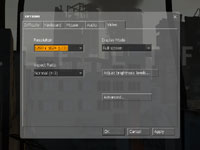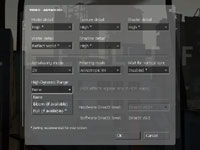Day of Defeat: Source
Publisher: ValveWe used the popular remake of the World War II online multiplayer, Day of Defeat: Source, which uses Valve's implementation of high-dynamic range rendering. We did three five minute portions of real world game play on the dod_anzio map. We connected to three different public servers each with a ping of less than 30ms and 16-20 players in the game when we were recording the frame rates.
Anti-Aliasing and Anisotropic Filtering were controlled from inside the game, and thus the drivers were left set to "Application Controlled". There are three options for the method of HDR used in this title. You can either disable HDR completely, make use of "Bloom" which is just what it says and less resource hungry in comparison to "Full" which, again is just what it says. It utilises a full dynamic range with the iris effect too.
We have written quite a bit about Half-Life 2: Lost Coast, Day of Defeat: Source and how Valve have implemented HDR in to the Source Engine. You can check out the articles listed below for more information on The Lost Coast & Day of Defeat: Source.
- Half-Life 2: Lost Coast HDR overview
- Half-Life 2: Lost Coast hands on
- Half-Life 2: Lost Coast Benchmarks & Video
- Day of Defeat: Source
- Cinematic Effects in Source
Below is a table of the best-playable settings that we found best for each video card configuration. We found that 25 frames per second is the required minimum, and a target of 45-50 frames per second (or higher) is the average frame rate in our manual run throughs on these mainstream video cards.


Both of the 512MB DIMM configurations suffered from a performance hit at the same settings that we found playable with the two 2x1GB configurations. The average frame rate dropped below 45 frames per second, meaning that there are chances that you'll experience hitching during the larger firefights. The minimum frame rate also dropped below 25 frames per second in both instances, too.
For online gaming, we'd recommend keeping your frame rate above 25 fps in the slower first person shooters (like Day of Defeat: Source), and above 30 fps in the more intense shooters like CS: Source and Battlefield 2. We found that with either two or four 512MB modules, the Day of Defeat experience at 1600x1200 4xTMS AA 16xAF with maximum in-game details was pretty good, but not quite as good as what can be experienced with 2x1GB modules.

MSI MPG Velox 100R Chassis Review
October 14 2021 | 15:04











Want to comment? Please log in.